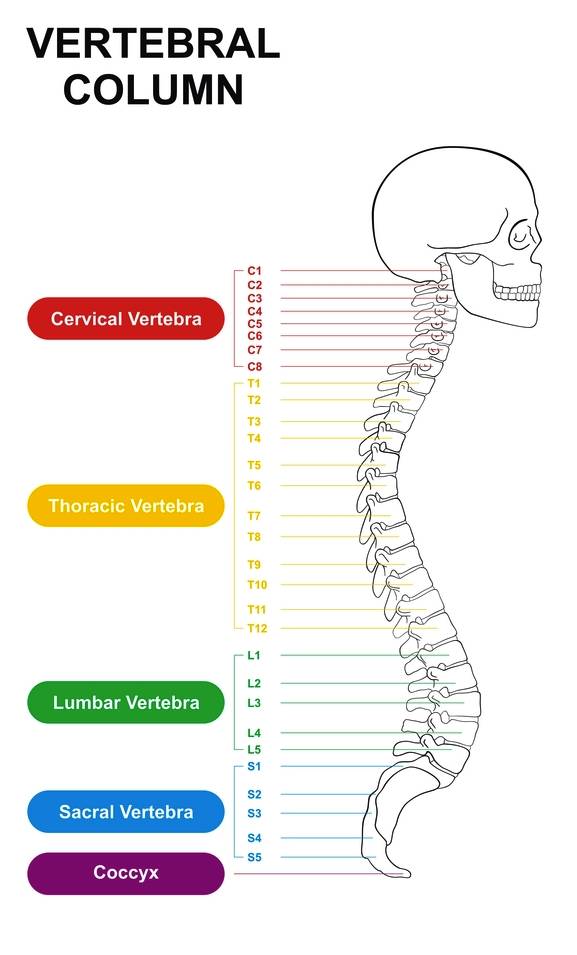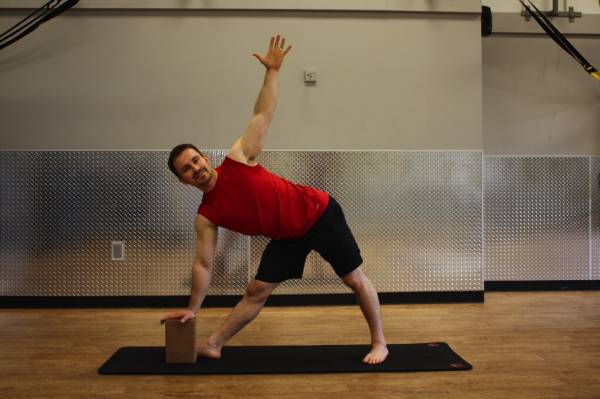Yoga will not “cure” a bulging disc. In fact, unless you are working one-on-one with a teacher, I wouldn’t recommend yoga with an active disc bulge. However, once your doctor has cleared you for physical activity, you can use modifications in yoga class and in your workouts to help alleviate – or at least not worsen – any lingering discomfort associated with your injury.
What Is a Bulging Disc?
To understand modifications, first take a moment to understand what a bulge is. It is exactly what it sounds like. In between the vertebrae on your back, there are soft layers of cartilage and fluid to cushion your bones – these are commonly called discs. They should remain in line, but occasionally can slip into a space they are not supposed to occupy. This space is supposed to be, and is likely still, occupied by nerves. When the disc protrudes into this space, it can create discomfort ranging from mild to extreme.
Disc bulges can be caused by sudden trauma, such as a car accident, or repeated misuse. Bulges are often referred to as herniated discs or slipped discs, and all these terms refer to the same condition. It is critical to take rest in the case of a severe bulging disc. If the problem is not treated appropriately, surgery may be required. In most cases, though, athletes can return to working out and practicing yoga even in the presence of a bulging disc.
Basic Rules to Remember
- Most bulging discs occur in the lumbar and cervical spine. Cervical spine bulges are far more dangerous as the neck is highly mobile and houses main nerves and blood supply to the brain. This article will not deal with bulges in the neck; we are specifically referring to spinal injuries occurring in the low back.
 Most lumbar bulges protrude toward the posterior. This forces the discs into the spinal column of nerves, which causes the painful sensation.
Most lumbar bulges protrude toward the posterior. This forces the discs into the spinal column of nerves, which causes the painful sensation.- Tell your coach or teacher that you have a bulging disc. Show them where and let them know if your bulge is atypical (i.e., protruding to the side or front).
- Think of a spring with a tube of play-dough inside. If you were to bend the spring, the play-dough would be pushed away from the bend. It would potentially squeeze through the side of the spring that became longer, rather than the side that became shorter. This is how a bulging disc works and why most bulges go out the back!
- Bulges are made worse when we bend our “spring,” i.e. our back, forward. Therefore, it is best to avoid this movement when you have a bulging disc.
- As a general rule, do not use flexion in the hips. This means the front of your hips should never bend more than ninety degrees. Specifically, we want to avoid any deep flexion of more than 135 degrees.
- Back bending should be not only okay but also actually therapeutic in treating bulging discs. However, make sure you have spoken with your doctor before moving forward with back-bends.
Modifications for Yoga and Lifting
In yoga, there is a lot of folding forward! Every forward fold involves flexion of the hip beyond 90 degrees. Try these modifications:
- Forward fold: Keep your knees bent and place your hands on your thighs. Keep the chest lifted away from the thighs, assuring the low back is long and not bent forward.
- Lunges: Lunges are okay, as the hip does not flex beyond 90 degrees, but avoid stepping the foot forward from downward facing dog. Instead, lower to your knees first. Place your hands on blocks or your hips to keep your chest upright, and step a foot forward without bending at the waist.
- Triangle pose: Use a block under your hand to keep your chest elevated away from your waist. Do not try to bend deeply into the pose; rather, engage your leg muscles and core in order to boost yourself out of the low back. (pictured below)

Apply these same principles in your lifting practice. This will mean abstaining from certain motions until you are healed:
- Avoid cleans until you have been cleared for this activity. This is one of the most precarious motions for a bulging disc.
- When squatting, avoid going any deeper than 90 degrees in the hip socket until you can keep your low back long.
- Use your core to stabilize your lower back in every single motion. Core strength will be a leading insurance policy against aggravating your bulge in the future. The more you engage your core, the less your low back will arch or round in any lift. This will keep your spinal column in line, allowing for only your natural lumbar curve.
Taking a moment to talk with a knowledgeable therapist or yoga therapist about your back injury will increase your chances of healing. When you understand what is functionally going on in your body, you can intuitively understand the modifications best for you. Ultimately, the goal is to restore a full range of motion. However, if you know you have a tendency to over-arch or bend into the lower back, you can consciously limit your range of motion for a safer motion on and off your mat.
Photos 1&2 courtesy of Shutterstock.
Photo 3 courtesy of Brandon Hofer.






